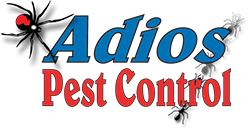Liquid termiticides are commonly applied as a form of barrier treatment, in order to control infestations of subterranean termites in and around homes. These types of barriers work by keeping termites away from a structure as well as killing those that penetrate the treated area.
There are a few types of liquid termiticides available on the market today, which are commonly used by extermination professionals. Chemicals such as “Prevail” and “Demon” are repellents that keep termites a distance away from the treated area. While these options are relatively effective, it is possible for breaks to form in the treatment perimeter, or for soil to be moved. This can allow termites to penetrate the barrier and enter the home.
Other forms of liquid termiticides such as “Phantom”, “Premise”, and “Termidor”, allow termites to enter the treated area and come into direct contact with the liquid. These chemicals do not repel and they do not kill on contact. Instead, the termites that come into contact with the chemical bring it back to their colony, which in turn eliminates the entire population.
While this type of treatment is typically more expensive per application, they have been shown to be a great deal more effective, overall. The United States Department of Agriculture (USDA) has conducted studies using “Termidor” per label instructions to track termite damage in covered slab plots. These studies concluded there was no termite damage noticed for as many as fourteen years following treatment. This is a major advancement in the control and elimination of termites.
While liquid termiticides can provide several advantages, they also come with a few disadvantages. To give you a better idea of how they measure up, below is a comparison of the pros and the cons.
Advantages:
- Liquid termiticides provide immediate protection to any structure.
- Liquid termiticides last for several years.
- Non-repellent liquid termiticides such as “Termidor” eliminate the problem of gaps forming in the protection barrier, allowing termites to enter the home.
- Liquid termiticides are relatively inexpensive when compared to other forms of termite control.
Disadvantages:
- Liquid termiticides can lead to water contamination in areas close to waterways or wetlands. In these cases, baiting methods may be a more suitable option.
- Drilling into areas that show evidence of termite entry, or concrete may be necessary.
- Liquid termiticides that are used to create repellent barriers are prone to developing gaps. Even the best exterminator cannot prevent this issue. This can lead to future problems with infestation.
It is always a good idea to consult with a licensed termite specialist. Our professionals can explain all of the possible treatment options for your exact situation, while providing further information on chemical safety, effectiveness, and treatment programs.
